Abstract
Serial samples of saliva were collected at home by 17 patients being treated for congenital adrenal hyperplasia to determine the circadian rhythm of androstenedione as an index of therapeutic control. Single samples of blood for measurement of plasma testosterone, 170H-progesterone, and androstenedione concentrations were collected from these and a further seven patients for comparison. Plasma androstenedione concentrations showed a close correlation with plasma concentrations of 170H-progesterone and testosterone. There was a strong correlation between the salivary androstenedione profiles and plasma testosterone concentrations in pubertal girls. Concentrations of androstenedione in saliva decreased during the day but remained raised at each sampling time in relation to plasma testosterone concentrations. Salivary androstenedione profiles are shown as nomograms to distinguish the degree of therapeutic control. The concentration of androstenedione, measured in plasma or saliva, is an alternative marker to monitor control of treatment in congenital adrenal hyperplasia. The measurement in saliva is a useful index of androgen production when blood sampling is difficult.
Full text
PDF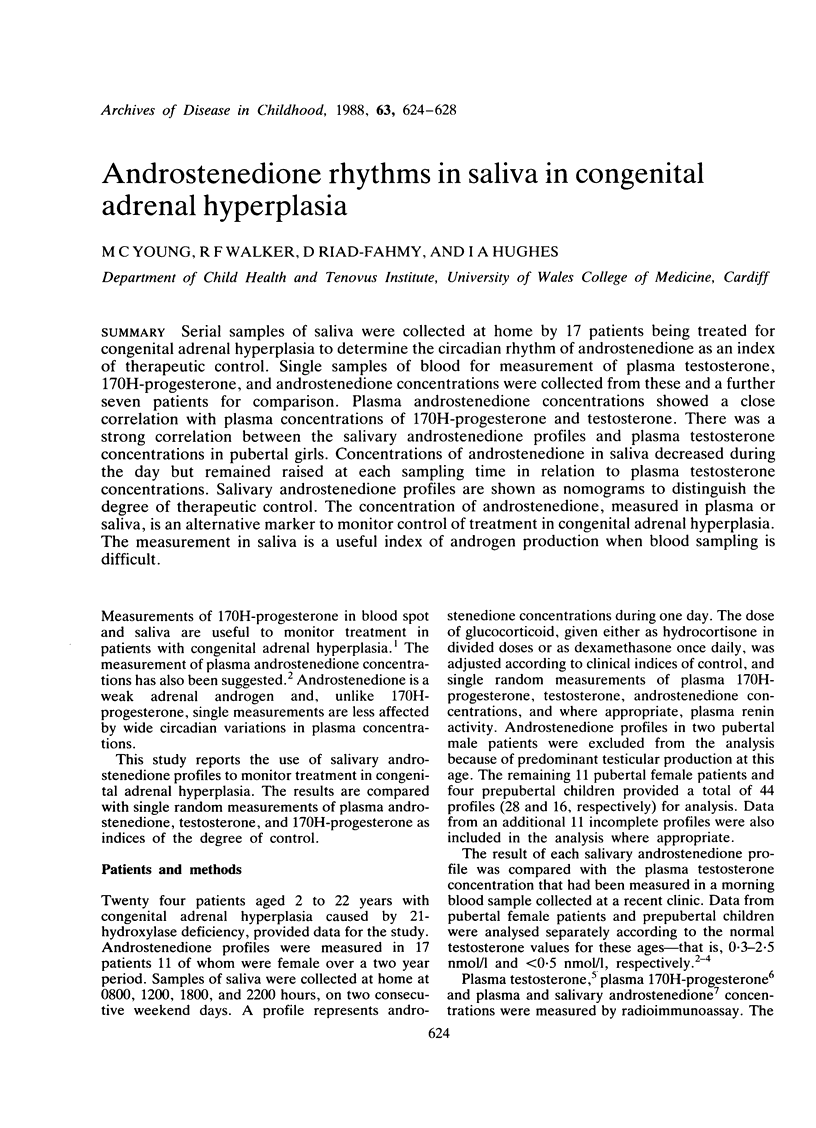
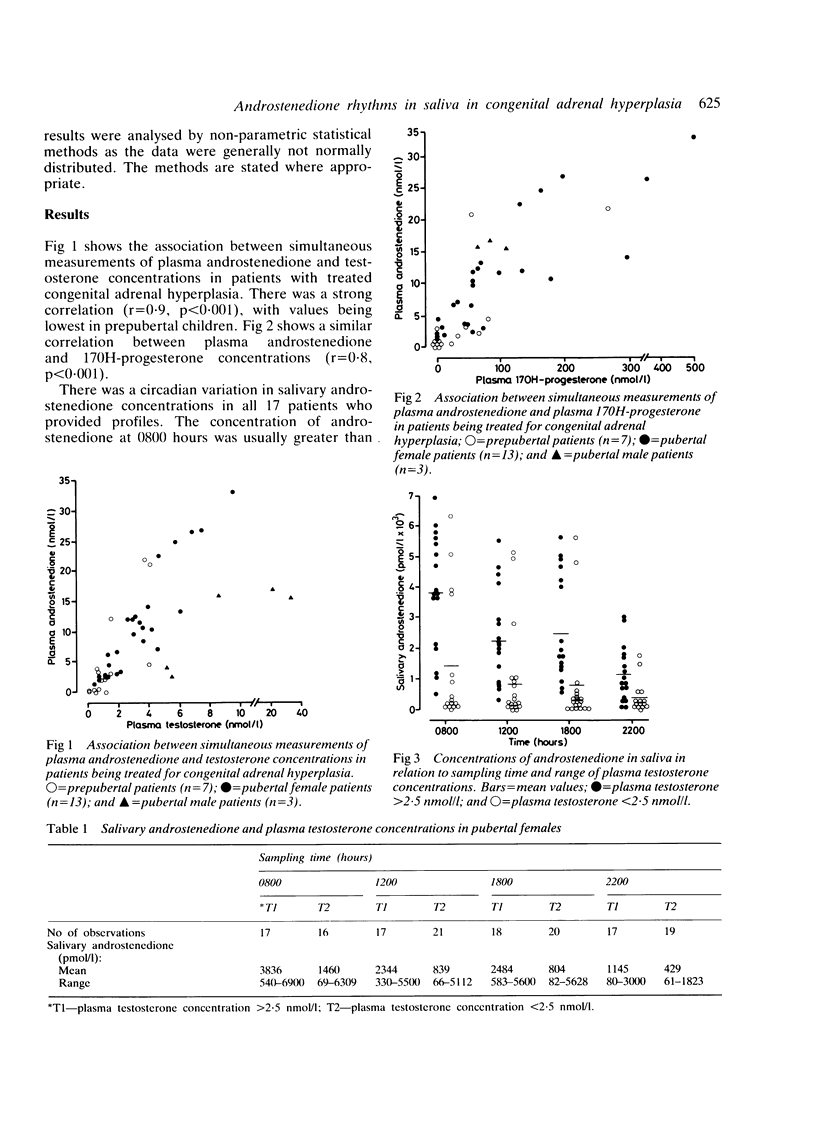
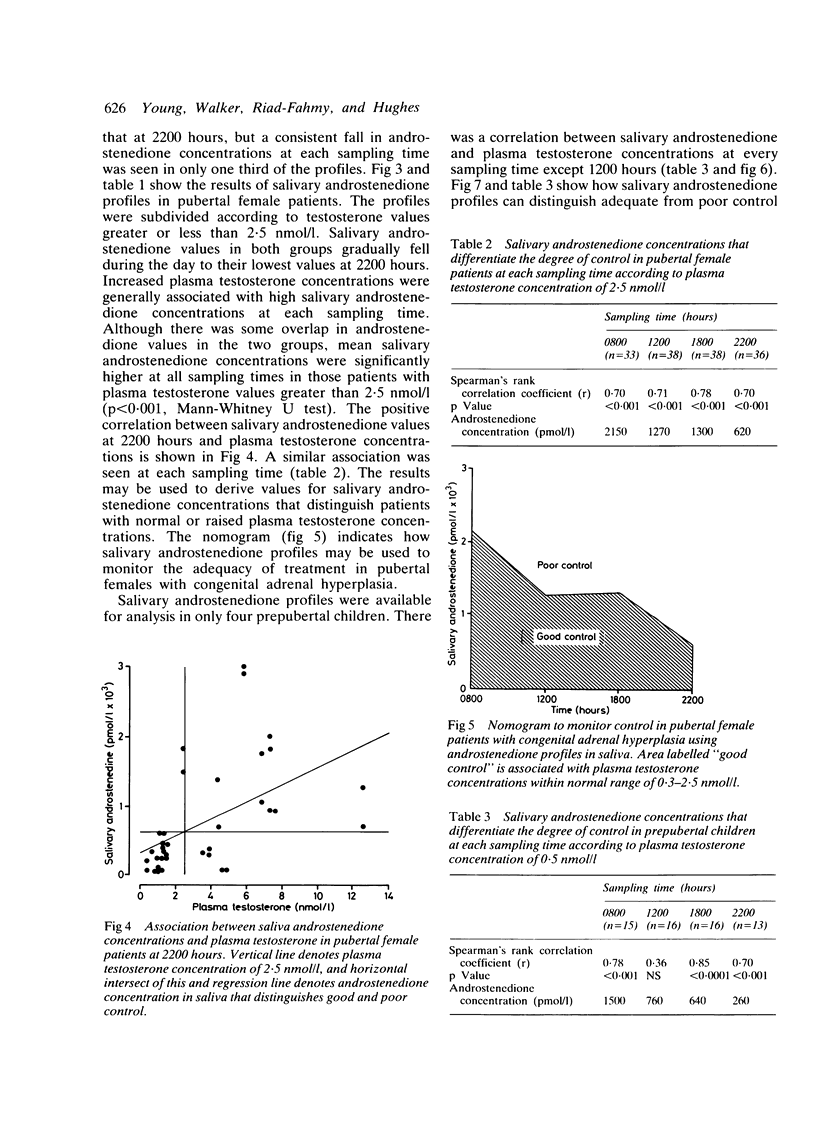
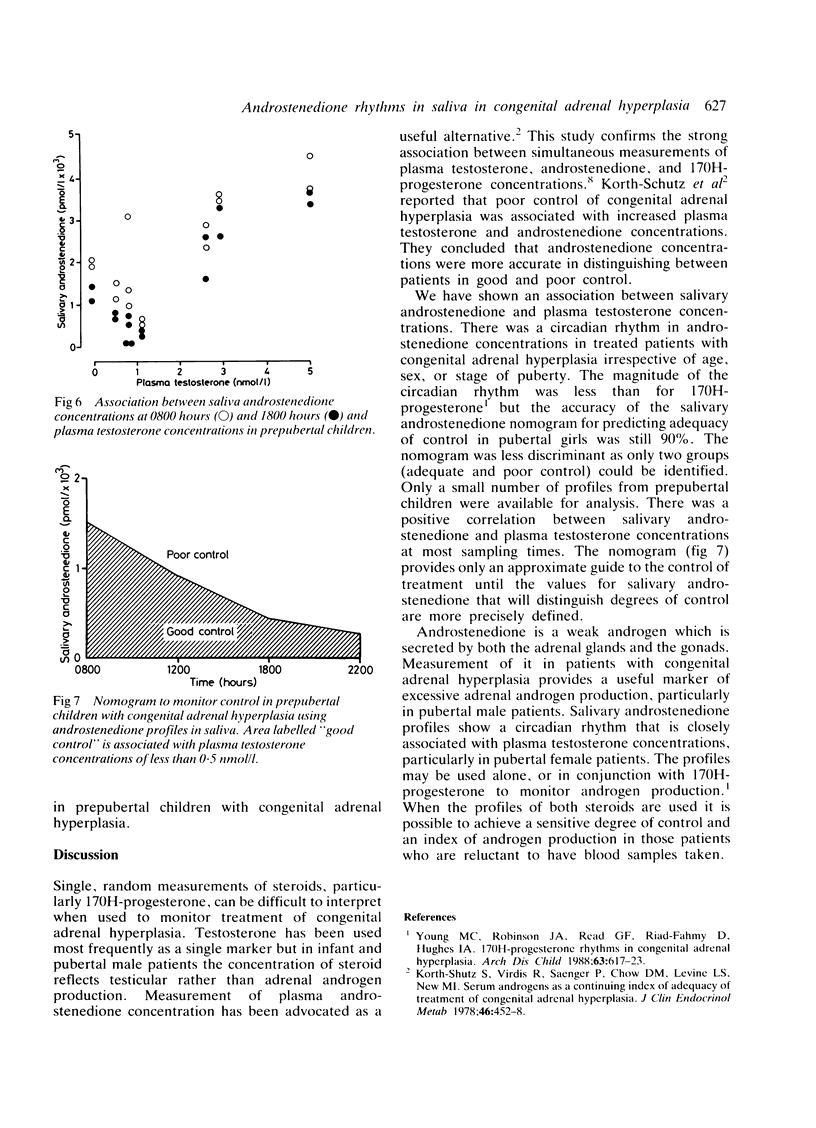
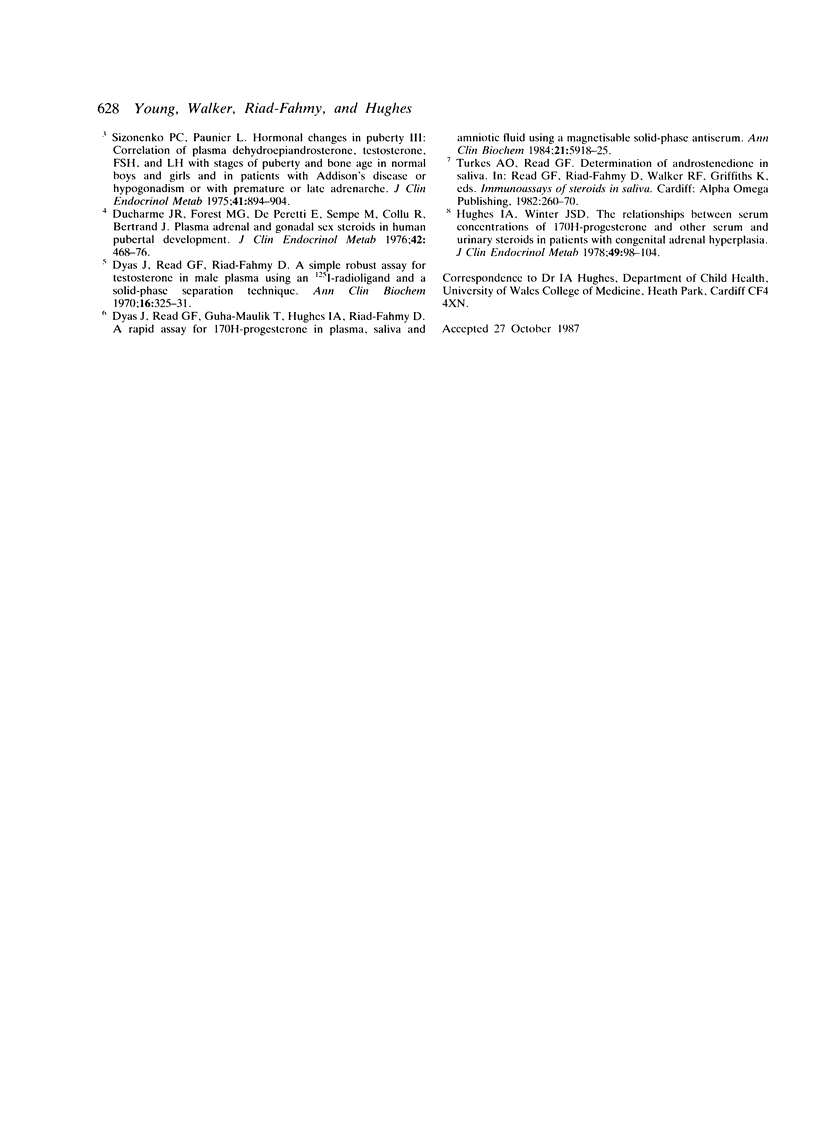
Selected References
These references are in PubMed. This may not be the complete list of references from this article.
- Ducharme J. R., Forest M. G., De Peretti E., Sempé M., Collu R., Bertrand J. Plasma adrenal and gonadal sex steroids in human pubertal development. J Clin Endocrinol Metab. 1976 Mar;42(3):468–476. doi: 10.1210/jcem-42-3-468. [DOI] [PubMed] [Google Scholar]
- Dyas J., Read G. F., Riad-Fahmy D. A simple robust assay for testosterone in male plasma using an 125I-radioligand and a solid-phase separation technique. Ann Clin Biochem. 1979 Nov;16(6):325–331. doi: 10.1177/000456327901600186. [DOI] [PubMed] [Google Scholar]
- Hughes I. A., Winter J. S. The relationships between serum concentrations of 17OH-progesterone and other serum and urinary steroids in patients with congenital adrenal hyperplasia. J Clin Endocrinol Metab. 1978 Jan;46(1):98–104. doi: 10.1210/jcem-46-1-98. [DOI] [PubMed] [Google Scholar]
- Sizonenko P. C., Paunier L. Hormonal changes in puberty III: Correlation of plasma dehydroepiandrosterone, testosterone, FSH, and LH with stages of puberty and bone age in normal boys and girls and in patients with Addison's disease or hypogonadism or with premature or late adrenarche. J Clin Endocrinol Metab. 1975 Nov;41(5):894–904. doi: 10.1210/jcem-41-5-894. [DOI] [PubMed] [Google Scholar]
- Young M. C., Robinson J. A., Read G. F., Riad-Fahmy D., Hughes I. A. 170H-progesterone rhythms in congenital adrenal hyperplasia. Arch Dis Child. 1988 Jun;63(6):617–623. doi: 10.1136/adc.63.6.617. [DOI] [PMC free article] [PubMed] [Google Scholar]


